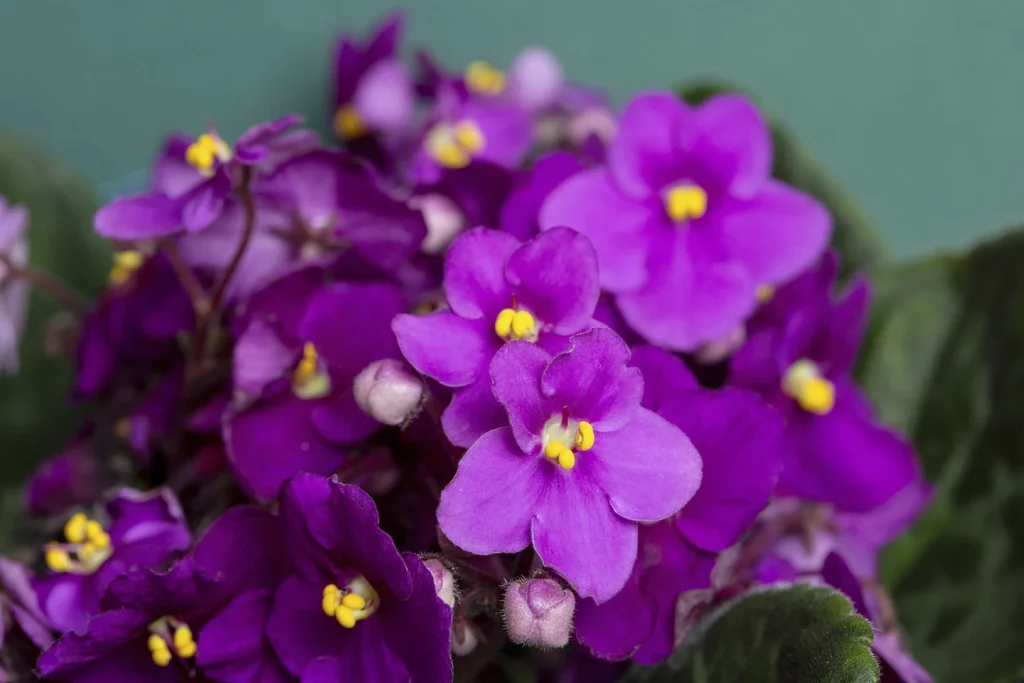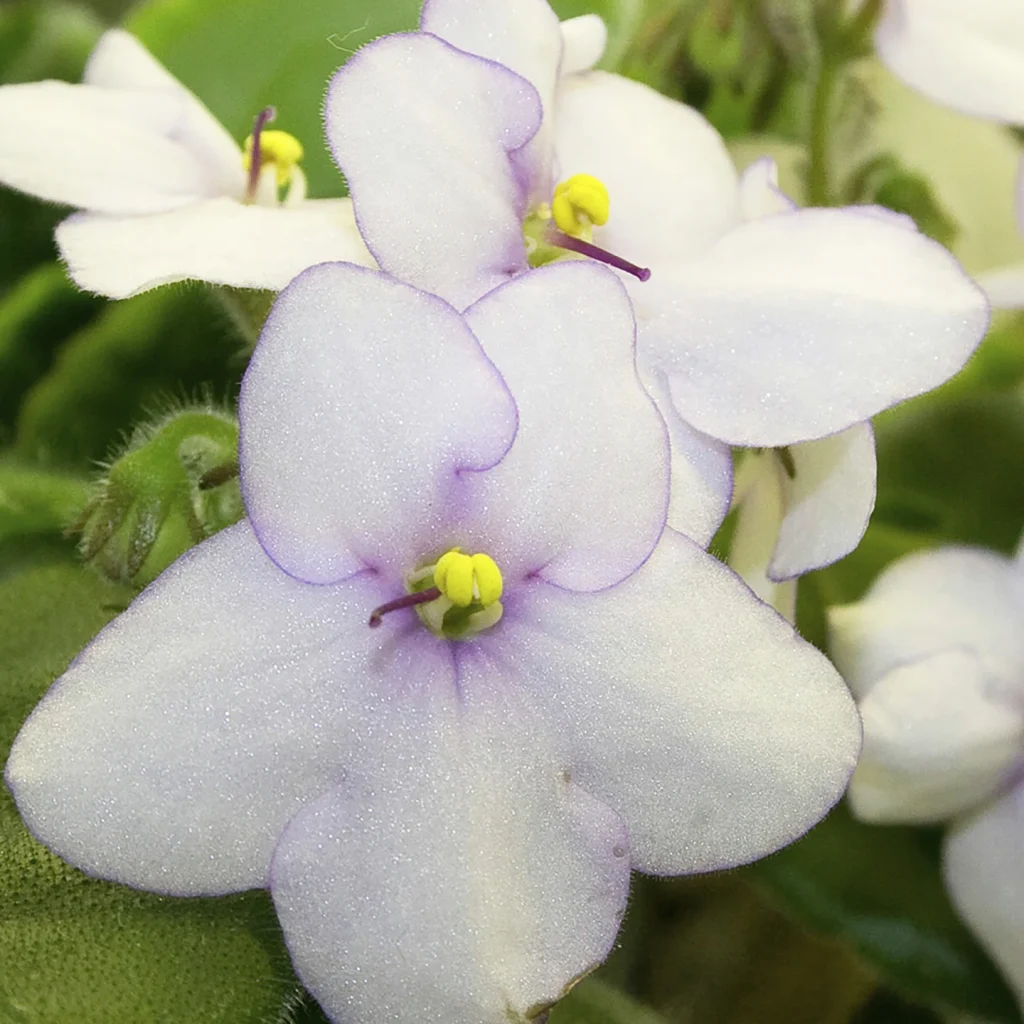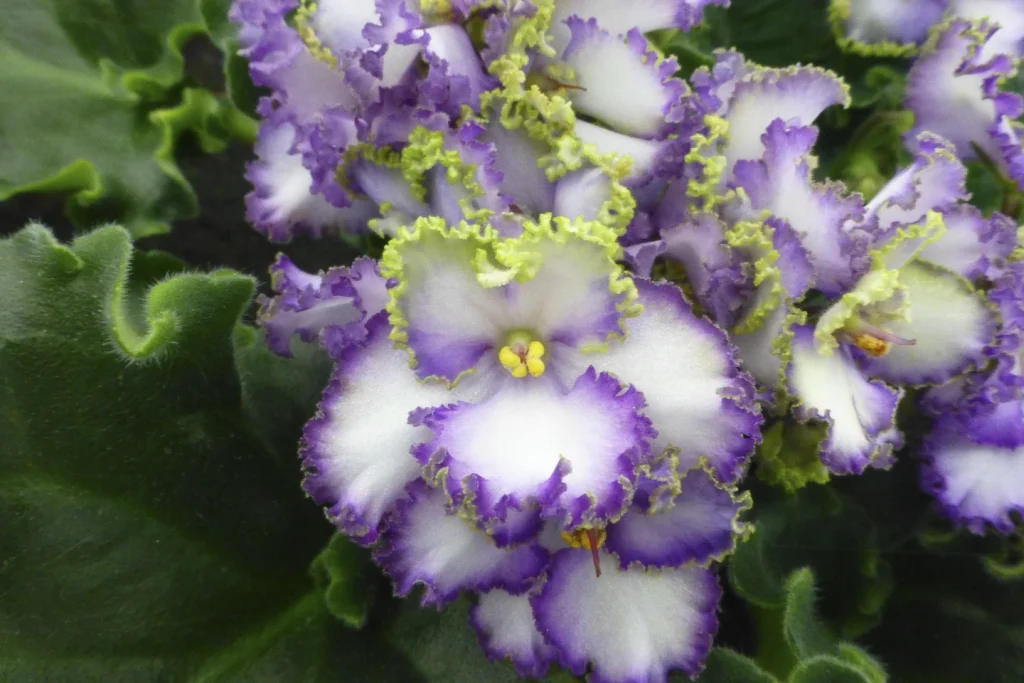African violets, those cheerful, shade-loving houseplants native to Tanzania and introduced to the U.S. in the late 1800s, are finally having their day in the sun: the National Garden Bureau has named 2024 the Year of the African Violet.
Violets in name only, the demure, 4- to 8-inch-tall flowering plants with velvety leaves and colorful flowers are not related to their namesake plants at all.
Rather, they belong to the Saintpaulia genus, named for German baron Walter von Saint Paul, who found them growing in the East African rainforest and is credited with introducing them to the U.S. by way of Europe.
They’ve been among the most popular houseplants ever since.
And that popularity was one factor considered by the NGB’s 160 members — leading companies and individuals in the horticulture field — when voting to spotlight the plant in the houseplant category, the nonprofit’s executive director, Diane M.
Blazek, told me. She cited the more than 300,000 uses of the hashtag #africanviolet on social media.
The Year of the African Violet marks a significant moment for these beloved plants, shining a spotlight on their beauty, history, and cultural significance.
This designation by the National Garden Bureau serves as a recognition of the enduring appeal and importance of African violets in the world of horticulture and beyond.
The history of African violets is intertwined with exploration, discovery, and the passion of individuals who sought to bring the beauty of these plants to a wider audience.
Baron Walter von Saint Paul’s encounter with these plants in the East African rainforest represents a pivotal moment in the introduction of African violets to the Western world.
His efforts to propagate and distribute these plants laid the foundation for their enduring popularity as cherished houseplants.
The velvety leaves and vibrant flowers of African violets have captured the hearts of plant enthusiasts for generations.
Their compact size and ability to thrive in indoor environments make them a beloved choice for adorning homes and offices with natural beauty.
The diverse range of colors and patterns exhibited by African violets further enhances their allure, offering a captivating display of nature’s artistry.
Beyond their aesthetic appeal, African violets hold cultural significance and symbolism in various traditions.
In some cultures, they are associated with sentiments of love, faithfulness, and spirituality, adding a layer of meaning to their presence in homes and gardens.
Their delicate yet resilient nature has also inspired admiration and reverence, becoming emblematic of perseverance and grace in the face of challenges.
The recognition of African violets as the focal point of the Year of the African Violet underscores the widespread appreciation and enthusiasm for these plants.
Their enduring popularity is evident in the extensive use of social media platforms to celebrate and share the beauty of African violets, reflecting a global community of enthusiasts who are drawn to their charm and elegance.
As the Year of the African Violet unfolds, it presents an opportunity to delve deeper into the world of these beloved plants.

Through educational initiatives, events, and collaborative efforts, enthusiasts and horticultural experts can come together to explore the diverse aspects of African violets, from their cultivation and care to their cultural significance and symbolism.
By fostering a greater understanding and appreciation for African violets, this designated year serves as a catalyst for nurturing a deeper connection with these cherished plants.
The Year of the African Violet also encourages a renewed focus on conservation and preservation efforts to safeguard the natural habitats of these plants.
As awareness grows about the ecological importance of preserving the environments where African violets thrive, there is an opportunity to support initiatives aimed at protecting these delicate ecosystems and the biodiversity they sustain.
In conclusion, the designation of 2024 as the Year of the African Violet heralds a celebration of the enduring beauty, cultural significance, and widespread appeal of these beloved plants.
From their historical roots in the East African rainforest to their cherished status as popular houseplants, African violets continue to captivate and inspire people around the world.
This designated year provides a platform for honoring and exploring the rich tapestry of experiences and meanings woven into the fabric of African violets, while also fostering a renewed commitment to their preservation and conservation.
As we embark on this journey to celebrate the Year of the African Violet, let us embrace the opportunity to deepen our connection with these remarkable plants and cultivate a lasting legacy of appreciation and stewardship for generations to come.
The African violet, known for its ease of cultivation, genetic diversity, and continuous introduction of new varieties, has maintained its popularity over the years.
Despite being perceived as a traditional plant associated with previous generations, the African violet has not fallen out of favor.
This resilience and adaptability have contributed to its enduring appeal among gardening enthusiasts.
The National Garden Bureau (NGB), established in 1920 by James Burdett, has played a pivotal role in providing reliable gardening information to the public.
Burdett, a journalist with a background in writing for seed companies, recognized the importance of expert-driven guidance in the realm of gardening.
Furthermore, his involvement in promoting victory gardens underscores the Bureau’s commitment to encouraging and empowering individuals to cultivate their own produce.
The NGB’s tradition of recommending standout plants for home gardeners continues to be a valuable resource.
By highlighting a diverse range of vegetables, annuals, flowering shrubs, bulb plants, perennials, and houseplants, the Bureau contributes to the enrichment of gardening practices.
This year, the spotlight is on the squash, Angelonia, Buddleia, lily, and hosta, showcasing the breadth of options available to gardening enthusiasts.
In the context of the gardening community, the NGB’s efforts align with the broader trend of embracing heritage plants and reviving interest in traditional favorites.
The African violet’s resurgence exemplifies the concept of “what’s old is new again,” as it captures the imagination of a new generation of gardeners while retaining its timeless appeal.
The enduring popularity of the African violet can be attributed to its adaptability and the ongoing innovation within the horticultural industry.
The plant’s versatility and resilience make it an attractive choice for both novice and experienced gardeners.
Furthermore, the continuous introduction of new varieties ensures that there is always something fresh and exciting for enthusiasts to explore.
As the NGB continues to champion exemplary plants and provide expert guidance, it contributes to the enrichment of gardening culture.
By recognizing the value of heritage plants and promoting a diverse array of species, the Bureau plays a vital role in fostering a vibrant and dynamic gardening community.
The enduring appeal of the African violet and the NGB’s dedication to promoting exceptional plants reflect the enduring relevance of horticulture in our lives.
African violets are a popular choice for indoor plants due to their beautiful and vibrant blooms. While they are not difficult to grow, they do require specific conditions in order to thrive and rebloom.
In this essay, we will discuss the key growing tips for African violets, including sunlight, moisture levels, watering habits, humidity, warmth, soil, and fertilization.
First and foremost, it is important to select a suitable spot for your African violets. They require filtered sunlight, so it is essential to place them in an area where they can receive the right amount of light without being exposed to direct sunlight.
During spring and summer, it is best to place the plants beside a north- or east-facing window, as these provide less exposure than windows facing south or west.
Additionally, using a sheer curtain between the plants and the windows can provide extra protection while allowing the right amount of sunlight to reach the plants.
However, from October through the end of February, it is advisable to move the plants into direct light, except in regions with harsh winter sun.
In terms of moisture levels and watering habits, it is recommended to water African violets from below to avoid getting the leaves spotted.
However, it is important not to let them sit in water for too long or dry out too much. Using room-temperature water is also crucial for their well-being.
Additionally, high humidity and warmth are necessary for the plants to thrive, especially in dry climates and during winter when heating units are in use.
Running a humidifier in the room or placing plant pots on a pebble-filled tray with water can help create a humid microclimate around the plants as the water evaporates.
Furthermore, African violets prefer slightly acidic soil and do not require frequent fertilization. It is recommended to feed them every two to three months with a 20-20-20 houseplant fertilizer or one specially formulated for African violets.
Additionally, allowing their roots to become somewhat crowded by planting them in cozy pots can contribute to their well-being.

With proper care and attention to these growing tips, African violets have the potential to bloom year-round, bringing beauty and vibrancy to your indoor space.
It is important to keep in mind that while they are not difficult to grow, they do require specific conditions that may not be available in all areas of your home.
Therefore, it is crucial to select a suitable spot and provide the necessary sunlight, moisture, humidity, warmth, soil, and fertilization for these plants to thrive and bring joy to their caretakers.
